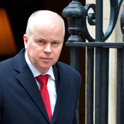One of the features of the London mayoral race has been unusually aggressive advertising. The Tories, in particular, have stooped to outright falsehoods. Their most memorable video featured an American voiceover in the style of The Twilight Zone, warning—over footage of New York—that Sadiq Khan had “seized power” and that London is now one of the crime capitals of the world.
Some argued this absurdity was deliberate, designed to get the video shared widely. But, as one Tory strategist told the journalist Jonn Elledge: “The conspiracy theory I’ve always liked the most is the one that presumes that behind something inexplicably dumb there must be some grand plan… My god, I wish it were true. I mean, have you met us? We really are just this shit.”
Nevertheless, the Tories’ general election marketing will be more professional. This spring has also seen Rishi Sunak interviewed by three Instagram influencers in their twenties with 700,000 followers between them. They were, apparently, not paid, but put questions so servile that they’d make a GB News journalist blush. There was no challenge to claims by the prime minister about, for instance, the value of his tax cuts to households.
This is a tactic developed by digital communications agency Topham Guerin, which has worked with Conservative election chief Isaac Levido in campaigns around the world. It had recent success in New Zealand, where the centre-right National Party won power after six years of Labour government.
Alongside more conventional online advertising, it used TikTok to build new prime minister Christopher Luxon’s profile. His videos were viewed 17m times, primarily by 18- to 34-year-olds—who are notoriously hard for parties to reach, and who supported him in surprising numbers. Joe Biden’s campaign team is also investing heavily in TikTok, even while Congress demands a change in its Chinese ownership.
To be clear, digital tricks are not going to lead to a shock victory for the Conservatives in the UK. Campaigns can make a difference at the margins, but they cannot make up for a weak track record over 14 years, an absence of policies or Sunak’s lack of political instinct. In any case, Labour has built up its own digital team led by experienced campaigner and long-time Starmer ally Tom Lillywhite.
But that doesn’t mean we shouldn’t pay attention to these shifts, or their potential long-term effects. And this year will see an unprecedented barrage, partly because there is now a wider range of platforms. The Tories have also quietly upped campaign spending limits from £19m to £34m for each party. Their coffers are full, thanks to some very large donations from a bunch of fairly unsavoury characters.
This pales in comparison with the billions due to be spent on political adverts in the US this year (of which an estimated $3.5bn will go on digital). We are, though, heading in that direction, thanks to both higher spending and online platforms making our traditional ban on televised political adverts redundant.
The shifting landscape matters for several reasons. Firstly, new forms of communication can presage different kinds of leaders coming to the fore. Just as Alec Douglas-Home wasn’t well-suited to the TV era, neither Sunak nor Keir Starmer are natural TikTokkers.
The unpredictability of virality offers more opportunities for politicians to quickly grab a national profile. Rory Stewart came to prominence during the 2019 Tory leadership election almost entirely due to his use of social media. One of the most-followed UK politicians is left-wing Labour MP Zarah Sultana, who gets very little mainstream coverage but has found a substantial audience for her worldview online.
Secondly, the shift to digital advertising makes it harder to hold parties, and others who wish to influence elections, to account. Online communications—unlike party political broadcasts and manifestos—often go under the radar because they are targeted at specific groups. This same fragmentation creates the space for stealthy interference. Foul play by the Russians or Chinese is an easy conspiracy theory which can be drawn on to explain away a loss, but there is evidence that it really happens.
An ongoing and contentious inquiry in Canada has revealed claims from its intelligence service that anti-Conservative misinformation was spread among Chinese diaspora communities by the Beijing government. We know Russia has tried, not hugely successfully, to interfere with US elections. A new unit has been set up by counter-terrorist police in the UK to tackle the threat to our elections.
None of this will change the outcome this time around. But as traditional forms of communication break down and it gets ever tougher to monitor what people are seeing, it’s not hard to imagine the result in a close future election being decided by false information—either from a foreign government or our own degraded political culture.













